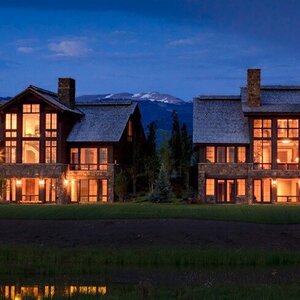The WPJ
THE WORLD PROPERTY JOURNALReal Estate Facts Not Fiction
Commercial Real Estate News

Smaller Warehouses Register Greater Rent Growth in U.S. Than Mega Warehouses
Commercial News » Dallas Edition | By Michael Gerrity | October 14, 2019 9:00 AM ET
According to new research from CBRE, even as the growth of e-commerce has lifted the entire industrial & logistics real estate sector, a sweet spot has emerged: warehouses smaller than 120,000 sq. ft.
CBRE analyzed U.S. industrial buildings by size and found that "light industrial" properties outperformed the other property types over the past five years. Specifically, light industrial warehouses measuring 70,000 to 120,000 sq. ft. registered the biggest decline in availability, down 3.9 percentage points, and the largest gain in average rents, 33.7 percent.
"In recent years, the headlines and attention have gone to the big-box distribution centers measuring 1 million sq. ft. or more to serve multistate regions," said Matthew Walaszek, CBRE Associate Director of Industrial & Logistics Research. "But smaller warehouses often positioned in densely populated markets are some of the most coveted properties for investors and users alike. These are the true last-touch warehouses from which merchandise is delivered directly to customers."
A relative dearth of construction of light industrial facilities has helped curtail availability and boost rents. Construction completions of light-industrial warehouses smaller than 120,000 sq. ft. have averaged 1 percent of the category's overall stock since 1990, according to CBRE. In comparison, construction completions of warehouses larger than 250,000 sq. ft. have averaged 3 percent of overall stock since 1990. The shortfall for light industrial properties results mostly from high land prices in dense markets as well as competition for space from other uses, like lofts and offices.
"We'll continue to see strong demand for light industrial facilities as e-commerce grows, which in turn means we can expect to see additional strong rent growth for these warehouses," said Chris Zubel, a Senior Managing Director leading CBRE's representation of Industrial & Logistics investors in the Americas. "Light industrial is the hottest coal in the campfire.
CBRE analyzed U.S. industrial buildings by size and found that "light industrial" properties outperformed the other property types over the past five years. Specifically, light industrial warehouses measuring 70,000 to 120,000 sq. ft. registered the biggest decline in availability, down 3.9 percentage points, and the largest gain in average rents, 33.7 percent.
"In recent years, the headlines and attention have gone to the big-box distribution centers measuring 1 million sq. ft. or more to serve multistate regions," said Matthew Walaszek, CBRE Associate Director of Industrial & Logistics Research. "But smaller warehouses often positioned in densely populated markets are some of the most coveted properties for investors and users alike. These are the true last-touch warehouses from which merchandise is delivered directly to customers."
A relative dearth of construction of light industrial facilities has helped curtail availability and boost rents. Construction completions of light-industrial warehouses smaller than 120,000 sq. ft. have averaged 1 percent of the category's overall stock since 1990, according to CBRE. In comparison, construction completions of warehouses larger than 250,000 sq. ft. have averaged 3 percent of overall stock since 1990. The shortfall for light industrial properties results mostly from high land prices in dense markets as well as competition for space from other uses, like lofts and offices.
"We'll continue to see strong demand for light industrial facilities as e-commerce grows, which in turn means we can expect to see additional strong rent growth for these warehouses," said Chris Zubel, a Senior Managing Director leading CBRE's representation of Industrial & Logistics investors in the Americas. "Light industrial is the hottest coal in the campfire.
Sign Up Free | The WPJ Weekly Newsletter
Relevant real estate news.
Actionable market intelligence.
Right to your inbox every week.
Real Estate Listings Showcase
Related News Stories
Commercial Real Estate Headlines
- U.S. Commercial Mortgage Delinquencies Rise in Q2, CMBS Loans Lead the Surge
- Tokenization-Focused Real Estate Investment Bank Announced
- Commercial Cap Rates Edge Lower in U.S., Hinting at Market Turn
- WPV Targets New $6 Trillion Digital Real Estate Tokenization Opportunity
- $1 Trillion in Data Center Development Underway Through 2030
- WORLD PROPERTY VENTURES: The 'Anti-VC' of Real Estate Plans Major Capital Raise
- Multifamily Sector Enjoys Record Absorption in U.S. as Supply Slows, Vacancies Drop
- Employee Back-to-Office Attendance Surges in U.S.
- Phnom Penh Commercial Property Sectors Face Crosswinds in 2025
- World Property Bank Announced to Capitalize on Coming Trillion-Dollar Tokenization Boom
- REAL ESTATE PREDICTIONS: Decentralized Events Contract Exchange in Development
- U.S. Architecture Billings Improve Slightly in May
- Tokyo Office Demand Spills into Non-Core Wards in 2025
- AI Hyperscalers Drive Record Data Center Leasing in Early 2025
- Commercial, Multifamily Mortgage Debt in U.S. Hits Record $4.81 Trillion in Early 2025
- U.S. Multifamily Market Rebounds in Early 2025
- U.S. Office Market Experiences Historic Conversion Shift
- New York City Enters New Era of Office-to-Residential Conversions
- World Property Ventures Plans New Capital Raise
- U.S. Commercial Real Estate Lending Rebounds Sharply in Early 2025
- U.S. Multifamily Housing Confidence Declines in Early 2025
- Asia Pacific Commercial Investment Holds Steady in Early 2025
- Carnival Plans New Miami Headquarters Spanning Over 600,000 Square Feet
- Hong Kong Property Investors Take a Wait-and-See Approach Due to U.S. Tariffs
- U.S. Multifamily Buyer and Seller Sentiment Improves in Early 2025
- One Trillion Dollars of America's Commercial Property Loans Mature in 2025
- U.S. West Coast Dominates Self Storage Demand
- Phoenix, Orange County and Inland Empire Emerge as Leading U.S. Industrial Markets
- U.S. Mega Distribution Centers Leasing Activity Grew in 2024
- U.S. Commercial Borrowing to Increase to $583 Billion in 2025, Up 16 Percent Annually
- Demand for U.S. Life Sciences Space Spikes 28 Percent Annually in Late 2024
- Multifamily Property Sector in America Rebounding
- Asia Pacific Commercial Property Investment Spikes 23 Percent in 2024
- U.S. Commercial Property Market Primed for Growth in 2025
- Architecture Industry Sees Mixed Signals as 2025 Approaches
- Global Data Center Demand Spikes in 2025
- 2025 Prediction: U.S. Commercial Investment Recovery Expected to Gain Traction
- Holiday Retail Sales for 2024 to Hit Record $1 Trillion
- Tech, AI Industries Drive Largest Share of Office Leasing Activity in U.S.
- Commercial Real Estate Lending in U.S. Enjoys Strong Growth in Q3
Reader Poll
Marketplace Links
This website uses cookies to improve user experience. By using our website you consent in accordance with our Cookie Policy. Read More







